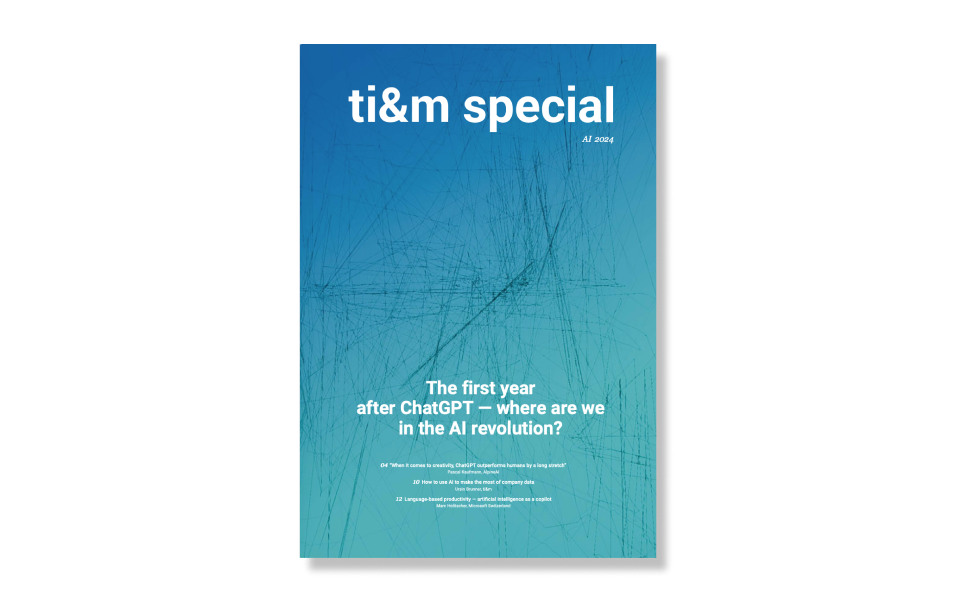Data-driven banking: Mission data – leveraging coporate treasures
Data-driven banking // Data strategies are becoming increasingly relevant. As the basis for new projects, innovative solutions and the development of new business models, business alignment, data governance and data management lay the foundation for exploiting the opportunities created by new technologies.
Data governance and data management have been at the top of management's list of priorities since the advent of AI. Because without a data strategy and comprehensive data management, even artificial intelligence cannot unearth the treasures buried in this data. The vision of data-driven banking therefore remains just that — a vision. In our projects at banks, we repeatedly experience the enthusiasm with which innovative ideas are approached and projects are implemented. All too often, however, we come up against the limits of what is feasible, simply because the basis is missing, because the “material data” is not available in sufficient quality. Successful implementation of a data strategy is not rocket science. Nevertheless, it requires management and engineering processes to focus on company data.
The cornerstones of a data strategy
In the first phase, ti&m’s consulting approach focuses on three questions:
What is the relevant data?
Who works with this data?
How is the data processed?
This data leads directly to the three cornerstones of an effective data strategy.
Business alignment
The question of relevant data leads directly to the question of the company's business activities and capabilities. If you know which capabilities are particularly pronounced in the company or which need to be newly developed for new business models, you have established a direct link from the strategic business decisions to the prioritization of data assets.
Data governance
The question of who works with the data is aimed at who in the company derives the most benefit from the data for their area of responsibility. The responsibility for the data should then also be placed there. Assigning and operationalizing this responsibility is the task of effective data governance. The term responsibility covers a broad spectrum of tasks, which can be roughly divided into a defensive and an offensive part. Defensive in the sense of protecting data in the interests of the company, preserving business secrets and complying with regulatory and legal requirements. Offensive in the sense of using the data to the company's advantage: direct monetization, indirect opportunities through gaining knowledge, early detection of risks and dangers. Data opens up countless opportunities, provided it is transparent, consistent and easily available.
Data management
This leads us directly to the biggest time and resource guzzler, namely the question of data processing and preparation. Even if good business alignment and established governance help to focus efforts on the “right” data, many questions remain unanswered. Do you keep the data in the cloud or in your own data center, do you need the information over time or only the current status, in real time or in the rhythm of batch processing? Does the data need to be archived, and if so, for how long? Are legal requirements complied with? Which technologies and tools are used for processing and what skills do employees need to have? Both operational and dispositive data are considered here across the entire life cycle.
Building on what already exists
The good news for most companies is that they don't have to start from scratch in any of the areas mentioned. Handling data is no longer new territory for any company today. In terms of responsibilities and processes, it is usually sufficient to focus and/or expand these areas to include the current tasks of data management. On the technical side, a rapid development has taken place in recent years; data is not only being freed from its silos throughout the company, it is also being made available for access by external parties. This requires a new level of data availability, consistency and security. For many companies, this means that they need to fundamentally review their data architecture and technical data management. The effort will be worthwhile as soon as new technologies and new operating models can play to their strengths.
Integration, decoupling and security
The freedom to design a data architecture is often restricted by economic or external factors — old technologies, available know-how or, most frequently, standard software systems with a proprietary data model. In this case, it is helpful to work with software components that realize an abstract view of the underlying components. At this level, the necessary security mechanisms can be implemented to make the data available externally, and a consistent view of different data sources can be enabled. One example of such a component is the ti&m Banking Integration: it decouples core banking systems such as Avaloq or Finnova as well as new, modern “neocores” from the frontend, thereby reducing complexity. This enables the development and integration of innovative front-end applications with a fast time to market and the simple integration of third-party systems. The integration also supports complex migration scenarios and thus provides a way out of the dreaded vendor lock-in.
Conclusion
Data gains in value the better it is organized and maintained. Whether as the basis for insights from AI-based applications, as a basis for far-reaching strategic decisions or as the “fuel” of complex ecosystems, it requires and deserves the necessary attention from management and employees. Only a company that has internalized this insight and anchored it in its culture will be able to assert itself with the necessary agility and speed in an increasingly fast-moving world.







